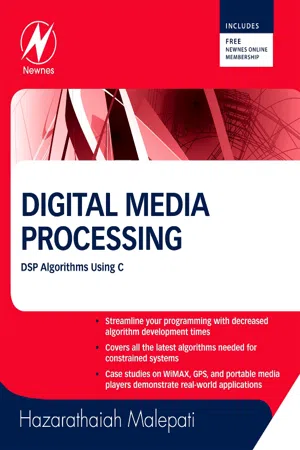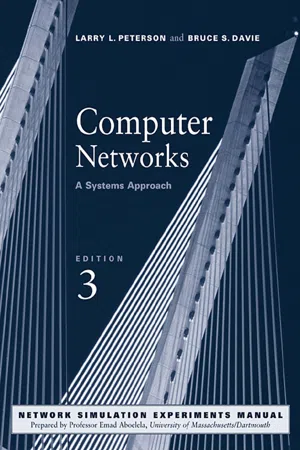Computer Science
Data Encryption
Data encryption is the process of converting data into a code to prevent unauthorized access. It uses algorithms to scramble the information, making it unreadable without the correct decryption key. This technique is widely used to secure sensitive information, such as financial transactions and personal data, and is a fundamental aspect of cybersecurity.
Written by Perlego with AI-assistance
Related key terms
1 of 5
10 Key excerpts on "Data Encryption"
- No longer available |Learn more
- Michael Whitman, Herbert Mattord, David Mackey, Andrew Green(Authors)
- 2012(Publication Date)
- Cengage Learning EMEA(Publisher)
(Note: the algorithms used in most current encryption are freely available and published to allow aca-demic and professional review.) Encryption is the process of converting an original message into a form that is unreadable to unauthorized individuals — that is, to anyone without the tools to convert the encrypted message back to its original format. Decryption is the process of converting the ciphertext message back into plaintext so that it can be readily understood. These are key terms that will be used throughout the book. The field of cryptology is so complex it can fill volumes; this textbook seeks to provide only a general overview of cryptology and some specific information about cryptographic tools. The early sections of this chapter provide background on cryptology and general definitions of key concepts in cryptography. In later sections, you will learn about common cryptographic proto-cols and some of the attack methods used against cryptosystems. - eBook - PDF
Digital Media Processing
DSP Algorithms Using C
- Hazarathaiah Malepati(Author)
- 2010(Publication Date)
- Newnes(Publisher)
Part 1 Data Processing This page intentionally left blank CHAPTER 2 Data Security Data exchange and data storage are common processes that we use every day. The data is usually categorized as unclassified and classified. Unclassified data can be accessed by anyone without restrictions; whereas classified data cannot be accessed by unintended third parties (i.e., other than sender and receiver). Examples of classi-fied data are nations’ homeland security-and military-related data, highly innovative and research-related data connected to defense and corporate, and financial transactions. 2.1 Cryptography Basics Cryptography techniques are used to protect classified data from unintended observers or eavesdroppers (also called adversaries, attackers, interceptors, interlopers, intruders, opponents, or simply the enemy). 2.1.1 Cryptography Terminology The following is a list of some important cryptography terms: Plaintext : Message with understandable substance (content). Encryption : Process of disguising a message in such a way as to hide its substance. Cipher text : Encrypted message. Decryption : Process of turning cipher text back into plain text. Cipher : Mathematical function (algorithm) used for encryption. Inverse cipher : Mathematical function used for decryption. Key : Large m -bit number used in the encryption or decryption process. The range of possible values of the key is called key space . Cryptosystem : Algorithm along with all possible plain texts, cipher texts, and keys. Cryptography : Art and science of keeping messages secure that cryptographers practice. Cryptanalysis : Art and science of breaking cipher text practiced by cryptanalysts. Cryptology : Branch of mathematics encompassing both cryptography and cryptanalysis practiced by cryptologists. 2.1.2 Cryptography System Using cryptographic techniques, we make the information unintelligible to people who do not have a need to know or who should not know. - eBook - PDF
- James Stanger(Author)
- 2011(Publication Date)
- Syngress(Publisher)
Chapter 8 249 250 Chapter 8 9 Basics of Cryptography and Encryption Introduction You have seen in previous chapters how the open source community has created powerful sniffing tools.You have seen how they can be used either to administer your network or to attack it. Because these sniffing tools are open source, and because it is relatively easy to place a Linux host on your company network, you need to consider ways to minimize improper use of packet capturing tools. Encryption solutions, such as Secure Shell (SSH) and Kerberos, are common solutions to this problem. Algorithms are the underlying foundation of cryptography; therefore, this chapter looks at the basics of algorithms, covering symmetric and asymmetric encryption and hashing concepts. This chapter then discusses the concepts of cryptography. For as long as people have been writing down information, there has been the need to keep some information secret, either by hiding its existence or changing its meaning. The study of these methods is the science of cryptography. Encryption, a type of cryptography, refers to the process of scrambling information so that the casual observer cannot read it. What are algorithms and keys? An algorithm is a set of instructions for mixing and rearranging an orig- inal message, called plaintext, with a message key to create a scrambled message, referred to as ciphertext. Similarly, a cryptographic key is a piece of data used to encrypt plaintext to cipher- text, and ciphertext to plaintext, or both (depending on the type of encryption). What does the word crypto mean? It has its origins in the Greek word kruptos, which means hidden. Thus, the objective of cryptography is to hide information so that only the intended recipient(s) can read it. In crypto terms, the hiding of information is called encryp- tion, and when information becomes readable, it is called decryption. A cipher is used to accomplish the encryption and decryption. - eBook - PDF
Computer Networks
A Systems Approach
- Larry L. Peterson, Bruce S. Davie(Authors)
- 2003(Publication Date)
- Morgan Kaufmann(Publisher)
Network Security It is true greatness to have in one the frailty of a man and the security of a god. —Seneca C omputer networks are typically a shared resource used by many applications for many different purposes. Sometimes the data transmitted between appli-cation processes is confidential, and the applications would prefer that others not be able to read it. For example, when purchasing a product over the World Wide Web, users sometimes transmit their credit card numbers over the network. P R O B L E M Securing the Data This is a dangerous thing to do since it is easy for someone to eavesdrop on the network and read all the pack-ets that fly by. Therefore, users some-times want to encrypt the messages they send, with the goal of keeping anyone who is eavesdropping on the channel from being able to read the contents of the message. The idea of encryption is simple enough: The sender applies an encryption func-tion to the original plaintext message, the resulting ciphertext message is sent over the network, and the receiver applies a reverse function (called decryption ) to recover the original plaintext. The encryption/decryption process generally depends on a secret key shared between the sender and the receiver. When a suitable combination of a key and an encryption algorithm is used, it is sufficiently difficult for an eavesdropper to break the ciphertext, and the sender and receiver can rest assured that their communication is secure. This familiar use of cryptography is designed to ensure privacy—preventing the unauthorized release of information. Privacy, however, is not the only service that cryptography provides. It can also be used to support other equally important services, 8 including authentication (verifying the identity of the re-mote participant) and integrity (making sure that the mes-sage has not been altered). - eBook - PDF
- Ido Dubrawsky(Author)
- 2011(Publication Date)
- Syngress(Publisher)
What Is Encryption? Encryption is a form of cryptography that “scrambles” plaintext into unintelligible ciphertext. Encryption is the foundation of such security measures as digital signatures, digital certificates, and the Public Key Infrastructure (PKI) that uses these technologies to make computer transactions more secure. Computer-based encryption techniques use keys to encrypt and decrypt data. A key is a vari-able (sometimes represented as a password) that is a large binary number—the larger, the better. Key length is measured in bits, and the more bits in a key, the more difficult the key will be to “crack.” For example, a 40-bit key is considered insecure by today’s standards, but it can have a value between 1 and 2^140 (1,099,511,627,776, over a trillion). The key is only one component in the encryption process. It must be used in conjunction with an encryption algorithm (a process or calculation) to produce the ciphertext. Encryption methods are usually categorized as either symmetric or asymmetric , depending on the number of keys that are used . These two basic types of encryption technology are discussed in the following sections. Symmetric Encryption Algorithms The most widely used type of encryption is symmetric encryption , which is aptly named because it uses one key for both the encryption and decryption processes. Symmetric encryption is also commonly referred to as secret-key encryption and shared-secret encryption , but all terms refer to the same class of algorithms. The reason why symmetric encryption systems are abundant is speed and simplicity.The strength of symmetric algorithms lies primarily in the size of the keys used in the algorithm, as well as the number of cycles each algorithm employs.The cardinal rule is “fewer is faster.” By definition, all symmetric algorithms are theoretically vulnerable to brute-force attacks (covered in Chapter 2), which are exhaustive searches of all possible keys. - eBook - PDF
Progress in Pure and Applied Discrete Mathematics, Vol. 1: Probabilistic Methods in Discrete Mathematics
Proceedings of the Third International Petrozavodsk Conference, Petrozavodsk, Russia, May 12–15, 1992
- V.F. Kolchin, V. Ya. Kozlov, Yu. L Pavlov, Yu. V. Prokhorov(Authors)
- 2020(Publication Date)
- De Gruyter(Publisher)
Unfortunately the methods of protection realized by software appeared to be very vulnerable because a slight mistake can generate the changes which reduce the effectiveness of the protection system to zero. In addition, in view of the organiza-tional principles of information storage, high skilled specialists have a possibility to reach any data which are not protected by special hardware or organizational mea-sures. Hence there exists a necessity to provide an illegibility of the data that can be accidentally called by a unauthorized user. This is attained by cryptographic means which provide the illegibility and are used practically in all information protection methods from enciphering the information itself to the organization of password systems, access control and so on. By the opinion of the specialists from the National Bureau of Standards of the USA encryption is the unique reliable method of data protection during their transmission and is very useful one during their storage on various data media (Data Encryption, 1978; Konheim et al., 1980; With Data Encryption, 1980). This is the reason of great interest in enciphering of information. Cryptographic methods do not exclude completely technical and organizational measures but reduce them to a minimum. In the last years the technical protection measures are often based on the cryptographic ideas. For data enciphering and deciphering corresponding methods and devices are needed. Moreover, they must depend on time, i.e., the method of enciphering must depend on certain variable which is called a cryptographic key. These keys should be generated, distributed, and controlled. All these constitute an encipher-ing system or a cryptosystem. The cryptosystem is not isolated from the computer but exists and works in the computer media and consequently the protocols which describe and control the usage of cryptographic means are needed. - eBook - ePub
Open-Source Robotics and Process Control Cookbook
Designing and Building Robust, Dependable Real-time Systems
- Lewin Edwards(Author)
- 2011(Publication Date)
- Newnes(Publisher)
CHAPTER 5Encryption and Data Security Primer
5.1 Introduction
It is impossible to build a trustworthy control network unless the topic of security is addressed and designed into the product from the beginning. Whether you are designing a system for your own use, or for installation into some industrial or commercial application, you will need to consider how to protect it against some level of attack from the outside world, and how to protect recorded data from theft or forgery.Although data security involves physical, procedural and other holistic aspects, most security techniques in consumer and commercial applications are centered around adding encryption to existing protocols and data formats. This is primarily because encryption is cheap, being provided by “free” software, and it is also much easier to force users to run a “secure” version of a program (with encryption features forced to be on) than it is to get them to change their data security habits. Note that encryption technology really embraces two related topics: protecting valuable data from being intercepted and read by people who aren’t entitled to read it, and authenticating transmissions so that commands from untrusted sources can be identified and ignored. The latter task involves encoding or wrapping data from a trusted source with a layer that cannot be forged by a third party. It doesn’t necessarily involve encrypting the actual data being transmitted. Be sure not to confuse these two points.When considering measures to protect your data, you must take account of the following factors:What part of the data needs to be protected. In many applications, a considerable proportion of the data throughput doesn’t need to be protected; only a small core of data needs protection. In other cases, it may be necessary to use different levels of protection for different classes of data.35What types of attack you need to protect against. - eBook - PDF
Secure Java
For Web Application Development
- Abhay Bhargav, B. V. Kumar(Authors)
- 2010(Publication Date)
- CRC Press(Publisher)
The algorithm needs to be of a certain caliber, the key needs to be of a certain complexity, and, moreover, the encryption keys need to be managed to ensure that the keys retain the complexity and secrecy required for protecting confidential information. Encryption as a data protection technique is required when sensitive information needs to be regenerated in its original form. In some cases, sensitive information need not be regenerated in its original form; for instance, user passwords can easily be subjected to a one-way hash, where the hash value of the user password is stored in the database and every time the user needs to authenticate, the password can be entered, which is converted into the hash value. The hash value generated from the user’s password input can be compared against the hash value stored in the database and, if found to be matching, can be the basis for user authentication. Truncation is another way of protecting data at rest. The truncation technique is used extensively when credit card information is involved. Entities that don’t need to store credit card information but still need some basis for the transaction can truncate the card number to contain only the first six or the last four digits, thereby eliminating the need to encrypt the information and deal with the associated key management procedures that come with encryption. Application Data Protection Techniques ◾ 173 8.2.2 A Study of Encryption Algorithms and Hashing Functions The encryption algorithm is one of the most critical aspects of the cryptosystem. The strength provided to protected data is based on the strength of the underlying encryption algorithm and the key and its secrecy. The source of the most accepted encryption algorithms of today are not secret and are usually open to the public domain; this is because it is widely accepted that the key is the only element * of the cryptosystem that needs to be kept confidential. - eBook - PDF
- Michael Whitman, Herbert Mattord(Authors)
- 2021(Publication Date)
- Cengage Learning EMEA(Publisher)
Table 10-1 History of Cryptology Copyright 2022 Cengage Learning. All Rights Reserved. May not be copied, scanned, or duplicated, in whole or in part. Due to electronic rights, some third party content may be suppressed from the eBook and/or eChapter(s). Editorial review has deemed that any suppressed content does not materially affect the overall learning experience. Cengage Learning reserves the right to remove additional content at any time if subsequent rights restrictions require it. Principles of Information Security 386 • Cipher—When used as a verb, the transformation of the individual components (characters, bytes, or bits) of an unencrypted message into encrypted components or vice versa (see Decryption and Encryption); when used as a noun, the process of encryption or the algorithm used in encryption, and a term synonymous with cryptosystem. • Ciphertext or cryptogram—The unintelligible encrypted or encoded message resulting from an encryption. • Code—The process of converting components (words or phrases) of an unencrypted message into encrypted components. • Decipher—See Decryption. • Decryption—The process of converting an encoded or enciphered message (ciphertext) back to its original readable form (plaintext); also referred to as deciphering. • Encipher—See Encryption. • Encryption—The process of converting an original message (plaintext) into a form that cannot be used by unauthorized individuals (ciphertext); also referred to as enciphering. • Key or cryptovariable—The information used in conjunction with the algorithm to create the ciphertext from the plaintext; it can be a series of bits used in an algorithm or the knowledge of how to manipulate the plaintext. Sometimes called a cryptovariable. • Keyspace—The entire range of values that can be used to construct an individual key. - Mark Ciampa(Author)
- 2017(Publication Date)
- Cengage Learning EMEA(Publisher)
Symmetric cryptographic algorithms use the same single key to encrypt and decrypt a document. Unlike hashing, in which the hash is not intended to be decrypted, symmetric algorithms are designed to encrypt and decrypt the ciphertext. Data encrypted with a symmetric cryptographic algorithm by Copyright 2018 Cengage Learning. All Rights Reserved. May not be copied, scanned, or duplicated, in whole or in part. WCN 02-300 CHAPTER 3 Basic Cryptography 114 Alice will be decrypted when received by Bob. It is therefore essential that the key be kept private (confidential), because if an attacker obtained the key he could read all the encrypted documents. For this reason, symmetric encryption is also called private key cryptography . Symmetric encryption is illustrated in Figure 3-6 where identical keys are used to encrypt and decrypt a document. Figure 3-6 Symmetric (private key) cryptography Decryption algorithm Encryption algorithm Confidential Memo Layoffs at the Lakeview store will begin... Confidential Memo Layoffs at the Lakeview store will begin... 626vscc*7&5 2#hdkP0)... 626vscc*7&5 2#hdkP0)... Transmitted to remote user Plaintext Plaintext Ciphertext Ciphertext Key - 134706242008 Bob (sender) Identical key Identical key Alice (receiver) Key - 134706242008 Symmetric cryptography can provide strong protections against attacks if the key is kept secure. Common symmetric cryptographic algorithms include the Data Encryption Standard, Triple Data Encryption Standard, Advanced Encryption Standard, and several other algorithms. Data Encryption Standard (DES) One of the first widely popular symmetric cryptography algorithms was the Data Encryption Standard (DES) . The predecessor of DES was a product originally designed in the early 1970s by IBM called Lucifer that had a key length of 128 bits. The key was later shortened to 56 bits and renamed DES. The U.S. government officially adopted DES as the standard for encrypting non-classified information.
Index pages curate the most relevant extracts from our library of academic textbooks. They’ve been created using an in-house natural language model (NLM), each adding context and meaning to key research topics.









